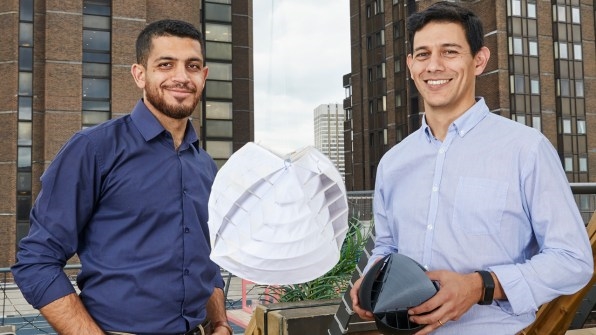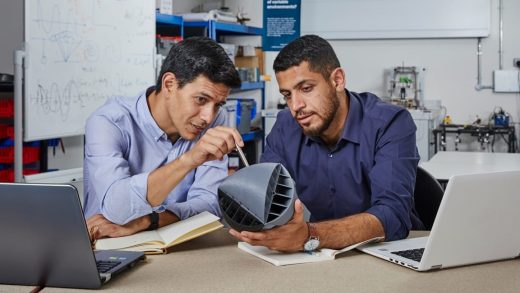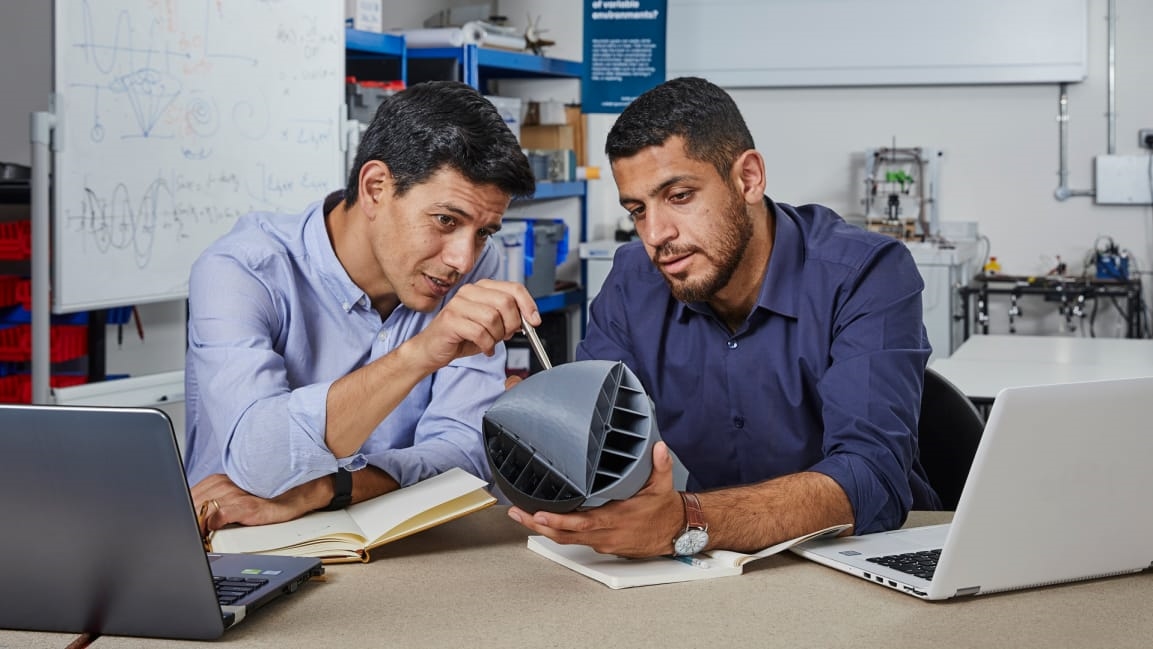This urban-scale wind turbine could generate power on your fire escape
A typical wind turbine is hundreds of feet tall, with blades that stretch wider than a football field. But a new design is small and lightweight enough that it could sit on the balcony of an urban apartment and generate some power there.
The design, called O-Wind, is the winner of the 2018 International James Dyson Award, which honors recently graduated design engineering students. The device makes use of a source of energy that is usually untapped: Wind gusts between buildings in skyscraper-filled cities, but standard wind power doesn’t make sense there, because of size, and because wind in cities travels chaotically as it moves around buildings (normal wind turbines only capture wind traveling in one direction).
“As you get close to cities, there are more obstacles, and wind gets a bit more turbulent,” says Nicolas Orellana, a designer originally from Chile, who developed the design with Yaseen Noorani, originally from Kenya, while studying for a master’s degree in international innovation at the University of Lancaster in the U.K. “It goes in vertical, horizontal, and diagonal directions, and it keeps changing and changing. Current turbines are not really optimized for this situation.”

[Photo: Dyson]
The designers adapted an older concept Orellana had worked on as a student, where he made a vehicle that could use winds coming from multiple directions to travel in a set direction. “Right away, we thought it could be useful for generating electricity,” he says. The new wind turbine, like the vehicle, uses vents with larger entrances on one side and smaller exits on the other, creating pressure that makes the device move. As the turbine turns, it powers a generator that can make electricity.
In cities, the device could make it possible for apartment dwellers to generate renewable energy. At the moment, of course, someone living in an apartment doesn’t have the option to install solar panels on the roof; only homeowners can take advantage of policies that give credit on electric bills as renewable power is sent back into the grid. “Right now, people in apartments cannot generate their own electricity, so they cannot get any savings on energy,” says Orellana. “They cannot participate in this big revolution to make a contribution to the environment.”
A similar design could be used in other applications, such as wave energy: In the ocean, water also travels in multiple directions. “There’s also no standard technology for harvesting that energy yet, so this could be a good option for this technology as well,” he says.
The designers have tested early prototypes to prove that the concept for the apartment-sized wind turbine works, but don’t yet know how much energy the devices will be able to generate, though it will certainly not be enough to power an entire apartment. The next step will involve more testing, and partnering with others who can help refine the design before it can be mass produced.
(33)



